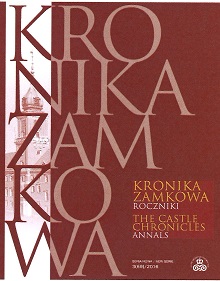Mundury cywilne w Polsce w XVIII-XIX w. : ze studiów nad dawnym strojem, obyczajem i sztuką portretową.
Civilian uniforms in Poland in the eighteenth to nineteenth centuries: a study of former costum, customs and the art of portrait
Author(s): Jak K. OstrowskiSubject(s): Fine Arts / Performing Arts, History of Art
Published by: Arx Regia® Wydawnictwo Zamku Królewskiego w Warszawie – Muzeum
Keywords: official civilian uniforms; Polish-Lithuanian Commonwealth; Duchy of Warsaw; Polish Kingdom; Free City of Kraków; Galicia; Grand Duchy of Poznań
Summary/Abstract: This study focuses on civilian uniforms worn in eighteenth-century Poland and in the partitioned Polish territories in the nineteenth century. In the Polish-Lithuanian Commonwealth, there were three types of civilian uniforms: order uniforms, voivodeship uniforms, and ‘friendship uniforms’. The first were worn by the knights of the order of the White Eagle (established in 1705; a white żupan and red kontusz) and the Order of Saint Stanislaus (established in 1765; a red żupan or waistcoat and white kontusz or tailcoat) on the orders’ ceremonial days. Voivodeship uniforms were intended for all noblemen (szlachta). They existed in two versions: Polish (żupan and kontusz) and Western (tailcoat and waistcoat), introduced in 1776 to reign in sartorial excess. In 1791 burghers got their own uniforms as well. Friendship uniforms were worn to manifest support for a particular politician.
Journal: Kronika Zamkowa. Roczniki
- Issue Year: 3/2016
- Issue No: 3
- Page Range: 241-310
- Page Count: 70
- Language: Polish

